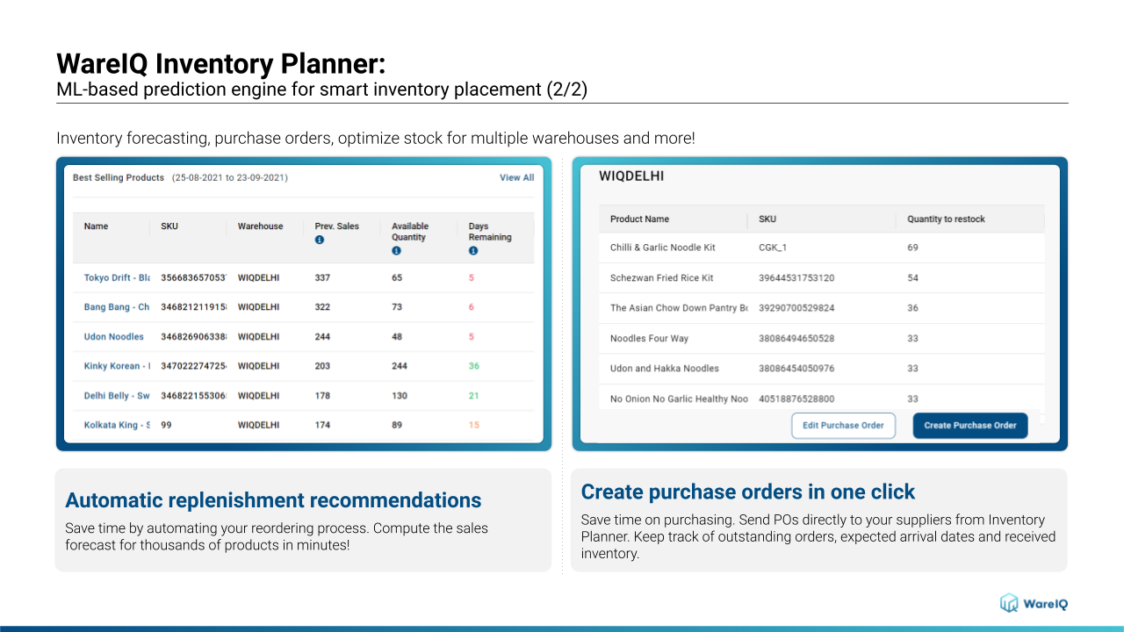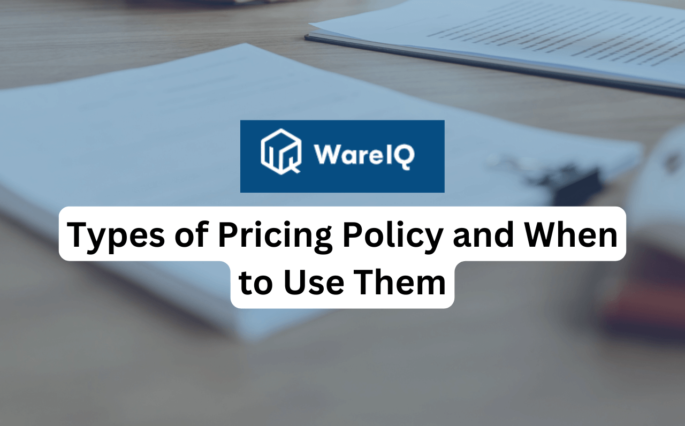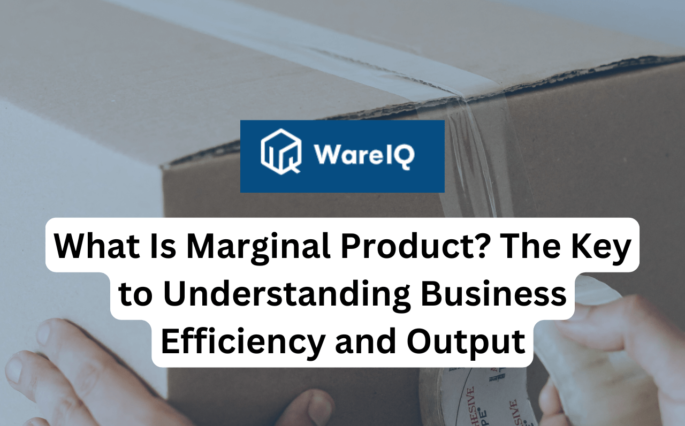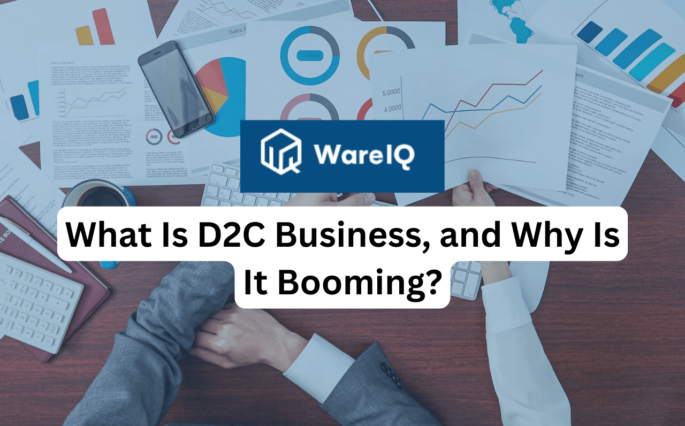Fill Rate in Supply Chain: A Comprehensive Guide Including Types, Calculation, Importance and Tactics to Maintain the Fill Rate in 2025

Running an eCommerce business has been very competitive since the majority of people now have access to the internet. Each and every website claims to give you a variety of products in the shortest period of time. Due to this, customer expectations have increased in recent years. Any eCommerce firm must have an effective fulfillment process to succeed in a world where customers expect their products to arrive quickly. You cannot afford to have delivery delays brought on by backorders and stockouts if your eCommerce firm is expanding.
In order to increase order fulfillment and improve delivery times, the order filling process needs to be carefully watched and successfully optimized. For this reason, fulfillment rate is a crucial metric that eCommerce companies should monitor. The fill rate is directly proportional to the deal an eCommerce company makes with a customer and the revenue it generates from it.
In this blog, we will go into detail about the fill rates in supply chain management, how to calculate it, the importance of maintaining a good fulfillment rate and why choosing a 3PL logistics company is important.
What is Fill Rate?
Fill rate or order fulfillment rate, is the rate of orders a seller can ship from their available inventory without missing out on purchases due to stockouts, backorders, lost sales, etc. It shows the level of eCommerce management a seller is versed with and whether they are able to meet the demand or fail to fulfill orders. It also helps sellers gauge the demand for various SKUs in their inventory and plan item procurement accordingly.
WareIQ, an eCommerce fulfillment company, empowers online brands with a superior-tech platform to compete with Amazon like service levels by bringing their average delivery timelines from 5-10 days to 1-2 days.
Types of Fill Rate
While the order fill rate is frequently the metric that most businesses track, there are other fulfillment rates in supply chain management that might provide useful information about how effectively a business’ supply chain management is working. They are as follows:
Order Fill Rate
The order fill rate is frequently tracked because it shows how effectively businesses can meet their buyers’ needs. High order fulfillment rates are a sign of a company’s ability to fulfill placed orders effectively and on time.
Case Fill Rate
The percentage of product cases a seller initially ships out of all the product cases the company orders is known as the case fill rate. It is mostly applicable to distributors and wholesalers.
Line Fill Rate
The percentage of order lines that a company fills out on the bill compared to the total number of order lines is known as the line fulfillment rate. On an order bill, companies keep track of sales made from customer orders as line items.
Vendor Fill Rate
Companies that buy products from vendors in wholesale quantities calculate vendor fill rate. This metric identifies the proportion of vendors who have shipped out orders out of all the vendors a company receives orders from.
Warehouse Fill Rate
The order fill rate is measured using the same metric as the warehouse fill rate. Managers of supply chains determine what portion of all customer orders are filled and shipped from their company’s warehouse, which is known as the warehouse fulfillment rate.
Importance of Fill Rate
The key to optimizing your wholesale inventory management, fulfillment procedures and enhancing customer satisfaction is knowing how well you can satisfy demand.
Helps in Brand Positioning
When your business consistently completes customer orders and maintains a high fill rate, it enhances its reputation, builds market trust and ultimately leads to positive positioning. This is due to the likelihood that clients will believe they can depend on your business to rapidly process and ship their orders. When first-time clients enjoy the ordering and delivery experience with your business, they are also more inclined to make subsequent purchases.
Affects Customer Relations
Do you meet and take care of your customers’ requirements right away or do you make them wait? Or have you established yourself as a dependable partner prepared to meet the demands of the market? Your credibility and the accessibility of your goods are important determinants of the development of enduring relationships with your partners and clients and result in increased levels of loyalty. The relationship of trust in a business is built by fulfilling what you claim to.
Provides Operational Insight
Your business may assess how well the supply chain processes are doing by monitoring order, warehouse, and vendor fulfillment rates. Lower fill rates can provide more information about the areas of the process that need improvement and when a seller is aware of this indicator, it can build plans more effectively. You need to examine the strategies you employ to deliver your products to customers by measuring the fulfillment rate.
Enhances Inventory and Labour Management
If your fill rate is constantly low, then make sure you are keeping ideal stock levels by searching for other suppliers or reviewing your reorder point. It helps you to scrutinize your fulfillment process and the team managing it. Having adequate inventory means that, although you face a consistently low fulfillment rate in a certain location, it may be a problem with the management and so you can check and resolve it.
Upgrades Fulfillment Processes
Your capacity to complete orders on schedule may be significantly impacted by an ineffective packing or shipping process. If your fill rate is poor because of packing or shipping problems, you should look into ways you can streamline your fulfillment processes.
How is the Fill Rate Calculated?
The steps below show you, how to find the fill rate of your company:
Calculate the Total Number of Orders That Have Been Shipped
Choose the time period for the fill rate measurement before using the below formula. This calculation, which you may perform on a monthly, weekly, quarterly or even annual basis, allows you to assess how well your company completes customer orders at various points of the year. Consider the situation where you wish to calculate the fill rate for the most recent quarter. Find out how many orders in total your business shipped to customers during that time. If during that quarter, clients placed 1,500 orders, use this number in the formula:
Hence, the fill rate is calculated as;
Fill Rate = (1,500 Shipped Orders) / (Total Orders) x 100.
Divide Shipped Orders By the Total Number of Filled Orders
Find out how many orders customers made overall during the period.
Using the example value of 1,500 total fulfilled orders, assume that customers placed a total of 1,700 orders. Put the values in the given formula:
Fill Rate = (1,500 Orders Shipped) / (1,700) x 100
= (0.88) x 100 = 88
Multiply Your Result by 100
You will get a value in a decimal after dividing. To convert this value from decimal to percentage form, multiply it by 100. The fill rate is always represented by a percentage. The fill rate would be as follows using the example numbers of 1,500 completed orders out of 1,700 total client orders for the quarter.
Fill Rate = (0.88) x 100 = 88%
The fill rate in the above case is 88%. Depending on the business, this can be a good fill rate. For instance, a company would have improved its fulfillment rate over their past rates if it increased it to 88% from a lower percentage. Your company’s customer satisfaction rate will be as high as your fill rate and should be close to 100%.
What is a Standard Fill Rate and How to Increase it?
A standard fill rate varies for each seller depending upon the offered product, selling platform, fulfillment type and company fulfilling it, in addition to location, demand, season, etc. 85-95% is generally considered as a good fulfillment rate. There are a few ways to increase and maintain it:
Choose a Trustable and Capable Fulfillment Partner
To increase the fill rate, fulfillment partners are one of the more crucial elements to rely on. An incompetent fulfillment system can never achieve a good fill rate. It is robust work to perform without any delays and needs to be fully accurate. A third-party fulfillment company ensures competent fulfillment under the guidance of experts, technologies and many more factors running the market.
Provide an Option of Alternative Products
It is difficult to offer an alternative if you sell a product that is too specialized. However, in many cases, you can provide options based on your customer’s choices and the resources available to you. Your customers will likely choose to try an alternative if they have to wait for you to ship their intended order.
Ask Your Sales Representatives Not to Sell Out-of-Stock Products
Your team should check the inventory levels and avoid listing and selling such products that are not available, and concentrate on other options if a buyer is looking for similar products. You can add a timer to notify the buyer when it could be available to buy the product again.
Invest in Tools for Inventory Optimization and Demand Forecasts
SaaS tools created for the purpose of inventory management and increasing your fill rate are not a luxury but rather, a must that adds useful data to your products and accompanies you on your way toward efficient data management. It automatically reorders products by optimizing your data, forecasting demand, defining inventory space, etc. It knows which of your products sell more quickly and easily. It helps you choose the best time to place fresh orders with your suppliers and make up for any shortfalls.
Conclusion: The Role of WareIQ in Maintaining Your Fill Rate
Why Choose a Third-Party Fulfillment Company
Customer expectations are constantly increasing in the eCommerce segment. It is not easy, especially for small and medium-scale sellers. They have problems running their business or tackling other related problems.
A seller may struggle to manage a store on multiple selling channels and a vast supply chain. This is only possible through 3PL fulfillment companies. By partnering with these companies, a seller can avail of different types of fulfillment and can easily maintain their fulfillment rate of over 90%. Sellers only have to take care of the selling and marketing aspects of their products. Post getting an order, all the fulfillment processes like sending an order confirmation message or mail, picking, packing, inventory management, assigning a delivery partner, collecting the payment, re-ordering and many more procedures are taken care of by the 3PL.
The quickest approach to increase your order fulfillment rate is to work with a 3PL that makes good use of technology. The majority of your eCommerce fulfillment procedures can be automated using advanced software, which interacts with your online store and gives you superior visibility into your inventory management and warehouse operations.

Getting a 90% Plus Fill Rate With WareIQ
WareIQ is a pioneer fulfillment company that can give customers a fill rate of more than 90% to our customers.
With WareIQ, you get a decentralized multi-warehouse layout that can easily fulfill your orders within the least time and with the least freight expenses. With its AI and ML-based warehouse management system software, you can optimize your sales data, forecast future demand, maintain inventory across multiple fulfillment centers and eCommerce selling platforms, and keep track of each and every item through a single dashboard.
Orders are automatically processed by WareIQ so they are swiftly sent to the fulfillment queue, where products are quickly chosen, packed and prepared for shipping. It eliminates the human input, which reduces the possibility of errors and improves order accuracy. All of these elements greatly quicken the order filling process and let you fill more orders at once, resulting in an increased fill rate.








